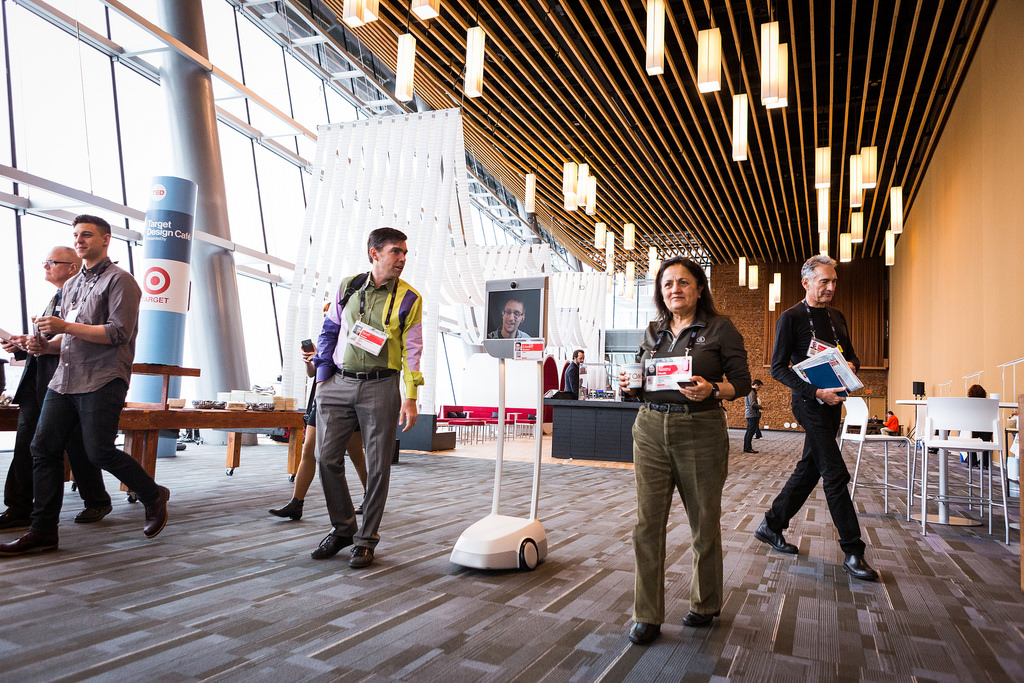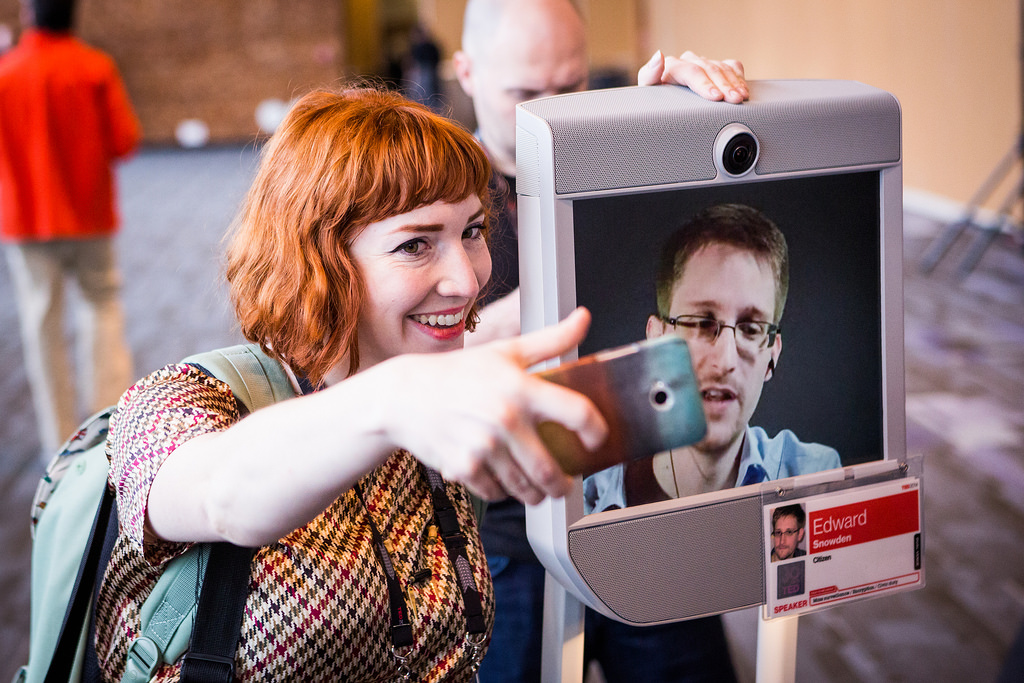
Edward Snowden wanders the halls of TED2014 using the BeamPro. He has apparently been using the bot to visit the ACLU office in New York. Photo: Bret Hartman
Edward Snowden hasn’t forgotten about the remote presence robot that allowed him to speak on the TED2014 stage and roam the halls of the conference, chatting with attendees. While in exile in Russia, Snowden has apparently used this system, affectionately dubbed the “Snowdenbot,” on a semi-regular basis.
Andy Greenberg writes in Wired about how Snowden has taken advantage of the BeamPro remote presence system to interact with folks at the New York office of the American Civil Liberties Union (ACLU). Using the bot, Snowden got a tour of the office from executive director Anthony Romero, and took a moment to pop into the office of a lawyer for a casual conversation. The bot allows Snowden to roll himself around at a speed of two miles per hour, and to turn himself to face whoever is speaking—or just to see what’s around in the room.
Henry Evans, also a TED speaker, is very familiar with telepresence robots. In 2003, he had a stroke-like attack and, ever since, has been quadriplegic and mute. In the talk, “Meet the robots for humanity,” Evans shares what it was like to use a telepresence robot for the first time and the incredible feeling that came with being able to look in his refrigerator or stroll around a college campus for the first time in years. His story speaks to another, perhaps more common application of this technology—to open up the world to those confined to bed for reasons of injury, illness or old age.
[ted id=1875]
Evans uses a telepresence bot several times a week. “It allows me to socialize from my bed with people all over the world,” he says. “It gives me a sense of free will again—the free will that makes me feel human. Remember, I am trapped in my body. I don’t get to go to the bathroom, eat or get up unless somebody helps me. So to get to go wherever I want, whenever I want, is a big deal.”
Evans was surprised and excited when he saw a telepresence robot roll onto the TED2014 stage and the screen flicker on to reveal Snowden. “I thought it both a clever and inevitable use of this new technology,” he says. “It raises the bigger and very interesting question of whether people—including prison inmates—who are legally subject to travel restrictions should also be subject to limitations on tele-travel. The courts will have to decide that and how to enforce whatever they decide. It’s going to become increasingly common.”
Evans often drives the very model that Snowden uses—the BeamPro, made by Suitable Technologies. These robots start at $16,000, and have an eight-hour battery life. Suitable markets the BeamPro as a tool that can be used by doctors to treat patients from afar or that can improve business relationships between global partners. And of course, it offers big possibilities for the disabled or confined.
“The BeamPro is very well engineered,” says Evans. “The only changes I suggest for the base model is a proximity sensor that keeps you from running into things—because I am a bad driver—and a laser beam distance sensor to prevent it from running under things or off stairs.”
The Wired article points out a few more challenges with the device—that there must be a person there to open doors for it, and that it could be susceptible to “man-in-the-middle” security attacks.
But still—Snowden appeared highly enthusiastic as he started up conversations with attendees at TED2014, and even snapped photos with some of them. And Evans adds that these issues just don’t dampen the overall experience. “It is the closest I come to walking,” he says.

A TED2014 attendee snaps a photo with Edward Snowden. Photo: Bret Hartman
Comments (6)